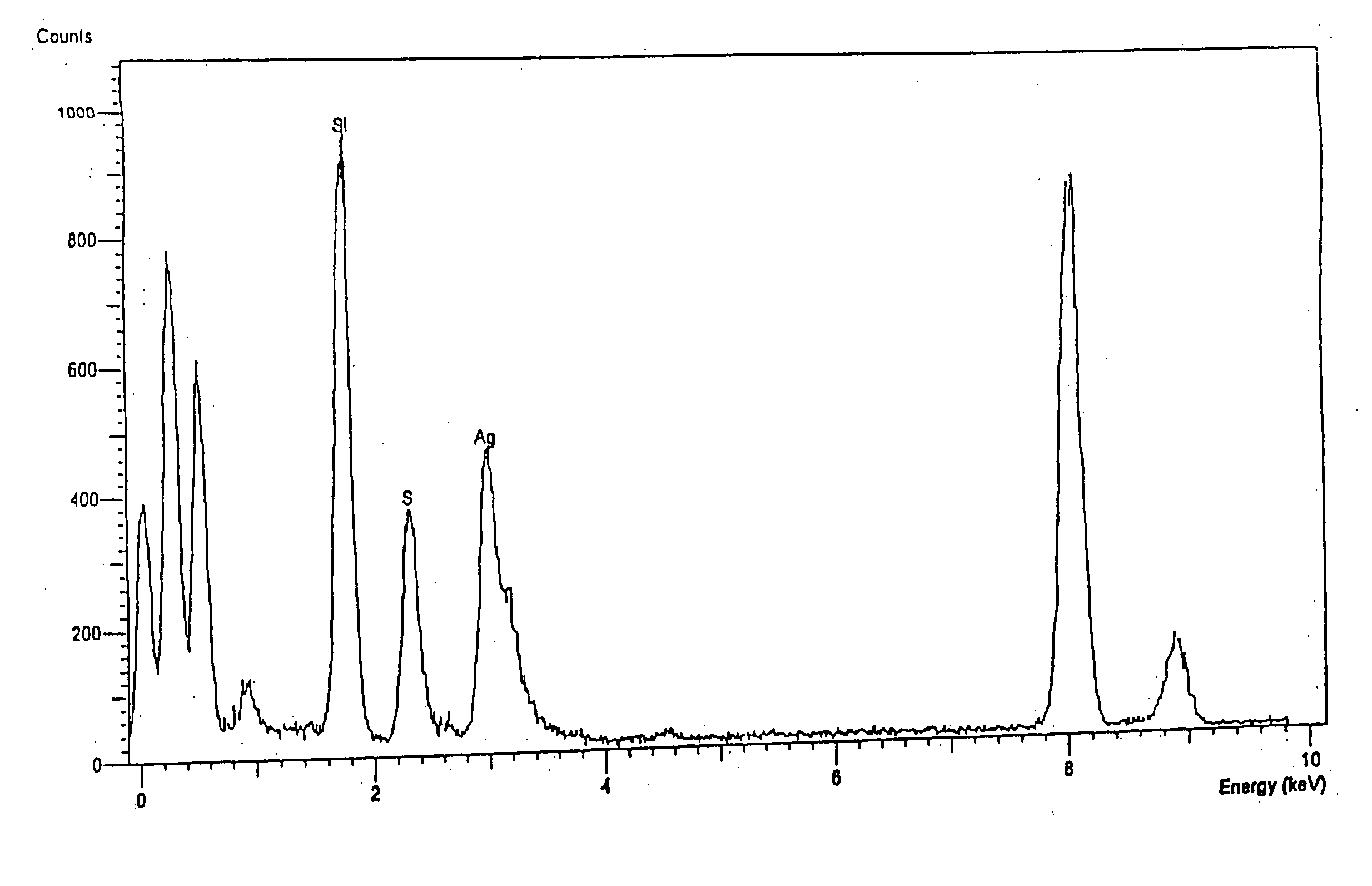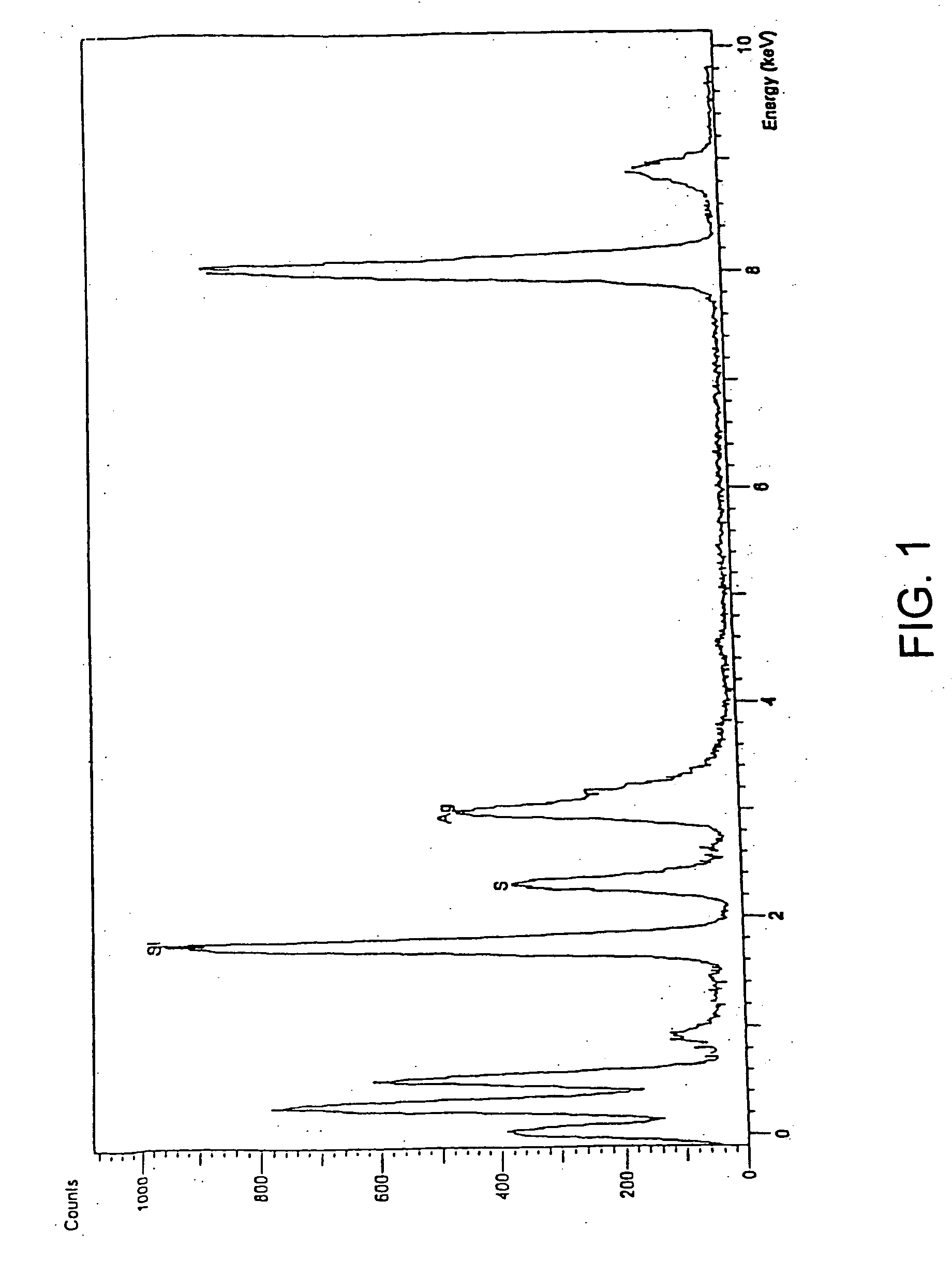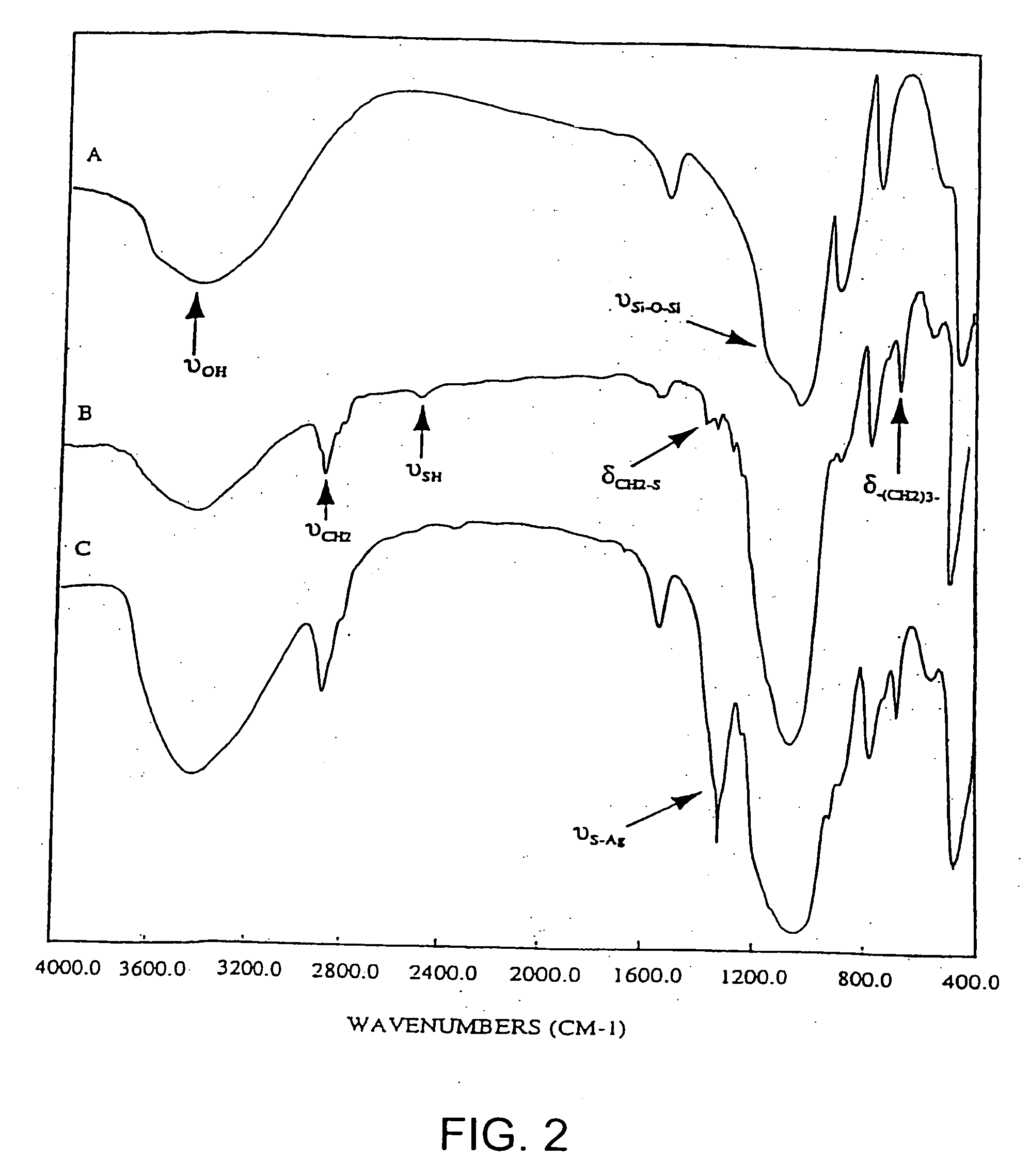Ion separation using a surface-treated xerogel
a technology of surface treatment and xerogel, which is applied in the direction of separation process, other chemical processes, silicon compounds, etc., can solve the problems of reducing the access of the inner surface to the diffusion of large molecules, and reducing the surface area, so as to reduce the interfacial energy of modified silica particles and prevent shrinkage. , the effect of preserving the porosity
- Summary
- Abstract
- Description
- Claims
- Application Information
AI Technical Summary
Benefits of technology
Problems solved by technology
Method used
Image
Examples
example 1
Producing CSMG from TEOS by Two-Phase Processing
[0093] Silica sol is prepared from TEOS, H2O, ethanol and HCl, in the total molar ratio 1:2:4:0.0007. The mixture of TEOS, H2O, ethanol and HCl is stirred at 60° C. for 2 hours. A NH4OH solution and variable amount of water is added to adjust the pH to 6 to 7 and to gel the mixture. Gelation normally occurs within a few minutes. The obtained wet silica gel is aged at 60° C. briefly (about 30 to 60 minutes) and washed with ethanol and water separately.
[0094] The mixture of 50 g of wet silica gel and a variable amount (depending on the desired % of ligand loading) of 3-mercaptopropyltrimethoxysilane is added into a reaction vessel equipped with agitator, heating mantel, thermometer and nitrogen purge system. A solution of water and ethanol is used as the reaction medium. The amount of ethanol in this mixed solvent should be adjusted according to the amount of ligand desired in the mixture. The reaction mixture is heated to 50-60° C. fo...
example 2
One-Phase Processiig of CSMG
[0095] Silica sol is prepared from TEOS, H2O, ethanol and HCl, in the total molar ratio 1:2:4:0.0007. The mixture of 50 ml of silica sol and a variable amount (depending on the desired % of ligand loading) of 3-mercaptopropyltrimethoxysilane is added into a reaction vessel equipped with agitator, heating mantel, thermometer and nitrogen purge system. Additional amount of water or ethanol is used to adjust the water / ethanol ratio in the solvent mixture so that their proportions are suitable for the amount of ligand desired. The reaction mixture is heated to 50-60° C. from 1 to 2 hours. Then, a NH4OH solution is added to the mixture to induce gelation. After cooling the CSMG is filtered and washed thoroughly with ethanol and water successively.
example 3
Incorporation of a Ligand Group Different than Thiol
[0096] Separately following the procedures of Example 1 and Example 2, 3-aminopropyltrimethoxysilane or chitosan are incorporated onto the surface of the silica gel with high loading, respectively, by the two-phase or one-phase embodiments.
PUM
| Property | Measurement | Unit |
|---|---|---|
| Temperature | aaaaa | aaaaa |
| Temperature | aaaaa | aaaaa |
| Temperature | aaaaa | aaaaa |
Abstract
Description
Claims
Application Information
 Login to View More
Login to View More - R&D
- Intellectual Property
- Life Sciences
- Materials
- Tech Scout
- Unparalleled Data Quality
- Higher Quality Content
- 60% Fewer Hallucinations
Browse by: Latest US Patents, China's latest patents, Technical Efficacy Thesaurus, Application Domain, Technology Topic, Popular Technical Reports.
© 2025 PatSnap. All rights reserved.Legal|Privacy policy|Modern Slavery Act Transparency Statement|Sitemap|About US| Contact US: help@patsnap.com



